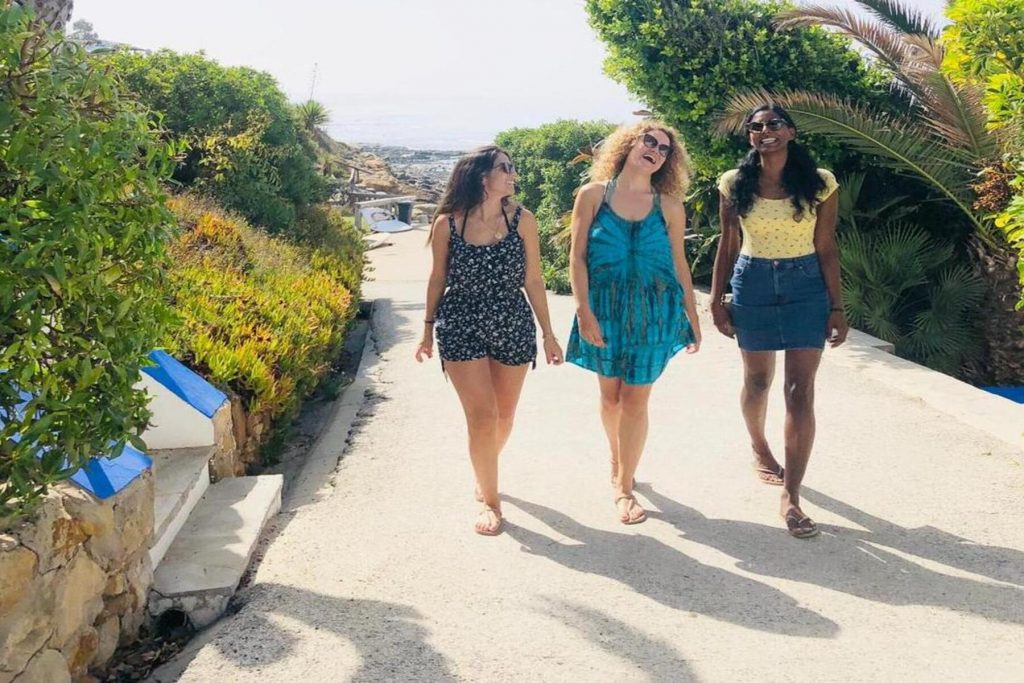
Sri Lankan-Canadian. Many of us are familiar with the challenges and uncertainties that come with a hyphenated existence. In my case, it has mostly been a great blessing, though I wasn’t always conscious of this, especially as a child.
I was born in Ottawa in the ‘80s to Sinhalese immigrant parents. Community and culture were always a big part of our lives. We participated in the annual New Year’s celebrations, we went to religious and cultural events at the local temples, we had a regular rotation of dinner parties at this or that Uncle and Aunty’s home, complete with cutlets and basement baila-dancing. I grew up hearing Sinhala spoken around me and was constantly being exposed to different facets of our culture through ceremonies, traditions and beliefs. From a young age, I felt a strong sense of community and belonging.
But what would happen to my Sri Lankan-Canadian identity if I uprooted my life, left family and friends behind, and moved to another country? That community and culture that shapes who I am, could it be maintained from thousands of kilometres away?
A few years ago, a summer vacation in Europe set me on the path to find out. I returned home from that trip with thoughts of change and a new adventure—and then I jumped. Thirty-one and on my own, I moved from Canada to a beautiful city in the south of Spain.
[Read Related: Cultural Identity and the Insecurities Associated With Naming]
I loved being thrown into a new and unique culture, observing and learning from a different approach to life. The Spanish are good at making time for everything—family, friends, social activities, hard work, being outdoors, food, enjoying the day together. Stir in brilliant sunshine, tapas in a lively city centre, and flamenco music—life is good.
Having said that, one thing I immediately noticed about the city is its lack of diversity. There are diverse groups of tourists that come through and can be seen on the streets, but daily life is generally devoid of colour. In my five years here, I’ve only ever seen a handful of resident South Asians.
Being in this community, I have few opportunities to practice my own culture in day-to-day life; no occasions to wear a saree, no temples to visit or worship in. I’m not hearing any Sinhala, and have yet to meet anybody who shares our similar traditions and practices.
My culture had been such a big part of who I was in Canada. It was a tangible, visible, practiced facet of my identity. In this new city, without any external elements to drive the expression of my roots, how could I continue to be Sri Lankan-Canadian?
[Read Related: ‘You Speak Hindi, Right?’: How College Taught Me to Embrace My Unique Cultural Identity]
Well, it turns out it happens naturally. I discovered that I don’t actually need external elements to make me practice or embody my culture. It comes up in conversations with friends and colleagues when we talk about family or childhood when we share our ideas and experiences. I realized that the influences of my culture and my roots are embedded in my perspectives and opinions, in the way I approach things, and in the way I see the world. This is especially evident to me as I learn more about Spanish culture and the local way of life. In discovering their traditions, habits and views, I end up reflecting on my own, examining them more deeply.
My culture manifests in more tangible ways, too. My parents gave me some Sri Lankan spice-cupboard essentials, so I make curries now and then, and the aromas and flavours always take me back. I have even prepared traditional food for local friends—receiving good reviews—though they don’t have my mom’s cooking for comparison.
Even my Spanish apartment reflects my culture. I have a little stand with a Buddha statue in the front room, along with an incense holder and an oil lamp used for rituals. There’s a framed batik elephant on the wall in the bedroom, shoes always come off at the front door, and in the bathroom, there’s a bowl for water next to the toilet.
In the end, I realized that it’s who I am—outwardly and inwardly, no matter where I live. I am a Sri Lankan-Canadian. Those influences from my culture and background have shaped the person I have become. They guide my life and are definitely a huge part of the framework through which I’m experiencing this current adventure in Europe.
My parents set my foundation in Sinhalese culture, and I have built on that through life in Canada, and now in Spain. I have learned to adapt to this foreign place, figuring out how to be myself while growing and evolving within this new culture. It makes me excited about what I may discover next, in my surroundings and in myself.




